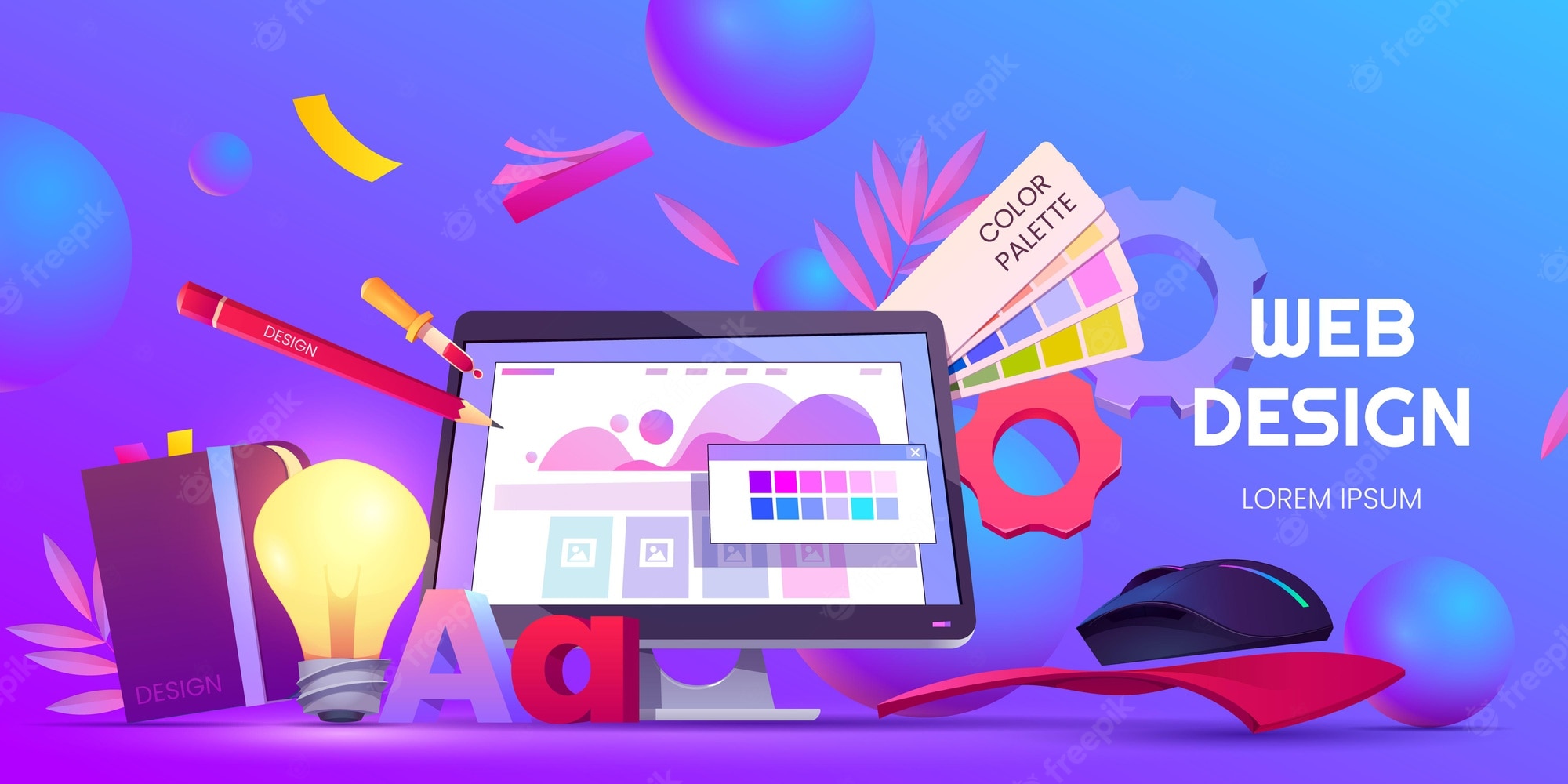The Importance of User Experience in Effective Web Design Strategies
User experience (UX) offers as a keystone in efficient web design strategies. It forms just how customers connect with a site, affecting their satisfaction and likelihood of returning. A properly designed UX can enhance involvement via instinctive navigating and responsive layouts. Forgeting these aspects might lead to frustration and raised bounce rates. Comprehending the intricacies of UX is necessary for designers aiming to develop compelling digital experiences that reverberate with varied audiences. What variables absolutely drive successful user interaction?
Recognizing User Experience and Its Influence On Layout
User experience (UX) is commonly perceived as a plain facet of internet design, it essentially forms how individuals engage with an internet site. UX includes all elements of the user's communication, including usability, accessibility, and overall fulfillment. A favorable UX fosters engagement, motivating individuals to check out the website and return in the future. Alternatively, an unfavorable experience can cause frustration, causing high bounce prices and shed possibilities for conversion.
Style elements like format, navigation, and web content company play crucial duties in forming this experience. Effective UX design expects user needs and preferences, ensuring that details is aesthetically enticing and quickly available. In addition, understanding user actions with analytics can give important insights, notifying design decisions that enhance use. Eventually, a complete understanding of UX enables developers to develop websites that not just draw in users but additionally advertise meaningful communications that line up with business goals and user expectations.
Secret Principles of Efficient User Experience
Efficient user experience hinges on several crucial concepts that improve website capability and involvement. Instinctive navigating style, receptive design essentials, and the relevance of visual pecking order are crucial aspects that add to a seamless communication in between users and internet content. Comprehending these concepts permits designers to produce more accessible and straightforward electronic environments.
Instinctive Navigating Design
Instinctive navigating design serves as an important gateway to their overall experience when users experience a website. Effective navigating enables customers to easily situate the details they look for, boosting their communication with the website. Secret principles include clear labeling, logical organization, and consistent positioning of navigating aspects. Labels must be straightforward, permitting customers to forecast the content they will find. A well-structured hierarchy helps individuals understand the connection in between different sections, guiding them with the website effortlessly. Furthermore, receptive food selections and easily accessible links contribute to a liquid experience across gadgets. By focusing on instinctive navigating, developers can greatly lower user aggravation and boost interaction, inevitably promoting a favorable understanding of the site and its content.
Receptive Format Basics
A well-structured navigation system normally brings about the need for a responsive layout, which is vital in today's diverse electronic landscape. A receptive design assurances that websites function seamlessly throughout numerous gadgets, consisting of tablets, desktop computers, and smart devices. This versatility enhances user experience by permitting material to be aesthetically systematic and conveniently obtainable, no matter of screen dimension. Trick concepts of receptive design include fluid grids, adaptable pictures, and media inquiries, which assist in perfect watching. In addition, prioritizing touch-friendly elements enhances interaction on smart phones. By carrying out a receptive design, developers can accommodate users' requirements, decrease bounce prices, and rise engagement. Eventually, a well-executed responsive design fosters a favorable user experience, urging visitors to discover the internet site even more.
Visual Pecking Order Relevance
Aesthetic hierarchy plays a crucial duty in guiding customers with a website, making certain that essential info records their focus initially. By strategically utilizing size, contrast, spacing, and color, developers can produce a clear path for users to follow. Larger elements frequently attract the eye, suggesting their importance, while contrasting colors can highlight phone calls to activity. Additionally, regular alignment and collection of associated material boost comprehension, making navigating intuitive. Efficient use aesthetic pecking order not just improves usability however additionally sustains the general visual of the site, fostering a positive user experience. When individuals can easily determine one of the most essential details, they are more most likely to engage with the web content, causing raised satisfaction and interaction with the internet site.
The Duty of Use in Web Design
Usability plays an important duty in web design, specifically via navigating simplicity and adherence to availability standards. Efficient navigation boosts user satisfaction by allowing site visitors to find details swiftly and with ease. Conference access requirements assures that all users, regardless of their capacities, can efficiently interact with the site.
Navigating Simpleness
Simpleness in navigation stands as a keystone of efficient web design, considerably influencing user experience. A streamlined navigation system enables individuals to locate details swiftly and intuitively, lowering irritation and enhancing complete satisfaction. Clear labeling and logical structure are necessary components, assisting users effortlessly through the website. Redundant links or overly complicated food selections can confuse individuals, resulting in boosted bounce rates. Additionally, mobile responsiveness has to be taken into consideration, guaranteeing navigating stays straightforward across gadgets. Decreasing and prioritizing crucial web pages mess additionally sustains user engagement. Reliable navigating not just promotes a positive experience but also urges users to check out the site much more thoroughly, inevitably causing higher conversion rates. In this regard, navigating simpleness acts as a crucial consider the total effectiveness of web design strategies.
Ease of access Standards
User engagement is significantly improved when internet sites stick to access standards, making certain that all customers, no matter their capacities, can navigate and communicate effectively. Conformity with these standards not just broadens the audience however likewise boosts overall user satisfaction. Available style incorporates attributes such as text alternatives for photos, keyboard navigating, and adequate Going Here color contrast, which assist in usage by people with handicaps. On top of that, applying these criteria can positively influence search engine optimization (SEARCH ENGINE OPTIMIZATION) by enhancing site framework and clearness. As web design develops, prioritizing availability comes to be vital in promoting a comprehensive digital atmosphere. By accepting these requirements, designers add to a much more equitable internet, eventually driving user commitment and interaction.
Relevance of Responsive Style for User Engagement
As consumers increasingly access web sites through a variety of devices, the value of responsive style comes to be extremely important for involving individuals effectively. Responsive style guarantees that an internet site adjusts seamlessly to various screen dimensions, providing an ideal viewing experience no matter of the device used. This versatility boosts user interaction by promoting simpler navigation and communication with web content.
When customers encounter a website that is responsive, they are more probable to remain longer, explore better, and return in the future. A properly designed receptive layout decreases the stress usually connected with scrolling and zooming on smaller sized displays, therefore lowering bounce prices. Additionally, responsive layout can favorably influence internet search engine positions, as internet search engine focus on mobile-friendly sites. In today's electronic landscape, where mobile use continues to climb, executing responsive layout is not just advantageous, but essential for preserving user engagement and assuring a positive experience throughout all gadgets.
Enhancing Load Times for Better User Satisfaction

To enhance tons times, internet designers ought to focus on maximizing photos, leveraging internet browser caching, and lessening HTTP demands. Furthermore, employing Material Delivery Networks (CDNs) can quicken content delivery by distributing it across different geographical areas. Streamlining code, such as pressing CSS and JavaScript data, further adds to much faster filling rates.
Eventually, a commitment to enhancing lots times not only boosts user complete satisfaction however likewise reinforces brand commitment and boosts the likelihood of repeat visits. A swift, seamless experience is important for keeping individuals and cultivating favorable communications.
The Impact of Visual Power Structure on User Communication
Visual power structure works as a crucial check component in guiding user communication on a website. By arranging content in such a way that focuses on details aesthetically, designers can affect just how customers engage and browse with a site. This pecking order is developed via various style techniques, including dimension, spacing, contrast, and shade. As an example, larger fonts or vibrant colors draw attention to important elements, such as phone calls to activity or headlines, while subdued shades and smaller sized font styles can indicate subordinate information.
Efficient aesthetic power structure aids individuals swiftly recognize what is most essential, minimizing cognitive load and improving functionality. It allows for instinctive navigating, making it much easier for individuals to discover what they need without aggravation. As customers interact with a website, a well-structured aesthetic hierarchy cultivates a more satisfying experience, ultimately resulting in greater involvement and conversion rates. Developers have to focus on these principles to produce a reliable and user-centered web environment.
Gauging User Experience: Devices and Methods

Often Asked Inquiries
Just How Can I Enhance My Site's User Experience on a Budget plan?
To enhance a website's user experience on a budget plan, one can maximize page tons speed, simplify navigation, implement responsive design, enhance material clarity, and collect user comments for continuous refinements, go to website making sure a rewarding visitor experience.
What Are Usual User Experience Blunders to Avoid in Web Design?
Common user experience errors in web design include cluttered formats, inadequate navigating, slow packing times, absence of mobile responsiveness, ignoring ease of access, irregular branding, and falling short to prioritize user comments - web design company. Each can substantially prevent total site performance
Exactly how Frequently Should I Update My Web Site for Better User Experience?
Internet sites need to be upgraded on a regular basis, ideally every few months, to preserve excellent user experience. Regular updates assist address use concerns, revitalize web content, and adjust to altering user needs, making sure the website remains appropriate and interesting.

Can User Experience Influence Search Engine Optimization Rankings on My Website?
User experience can greatly impact SEO positions, as internet search engine prioritize internet sites that offer smooth navigation, fast filling times, and appealing content. A positive user experience can cause lower bounce prices and higher search visibility.
What Function Does Access Play in User Experience Style?
Availability plays a vital function in user experience style by making sure that all individuals, despite capabilities, can interact and navigate with a web site efficiently. This inclusivity enhances total contentment and involvement amongst varied users.
User experience (UX) is usually regarded as a plain facet of internet style, it essentially shapes exactly how customers interact with a website. User involvement is considerably boosted when sites adhere to ease of access standards, ensuring that all individuals, regardless of their capabilities, can navigate and engage effectively. Measuring user experience (UX) is important for comprehending just how efficiently a site fulfills the requirements of its customers. Furthermore, usability screening, where real users browse the website while viewers note difficulties, offers direct responses on user experience. Usual user experience blunders in web style include messy designs, bad navigating, slow-moving loading times, absence of mobile responsiveness, ignoring ease of access, inconsistent branding, and falling short to prioritize user feedback.